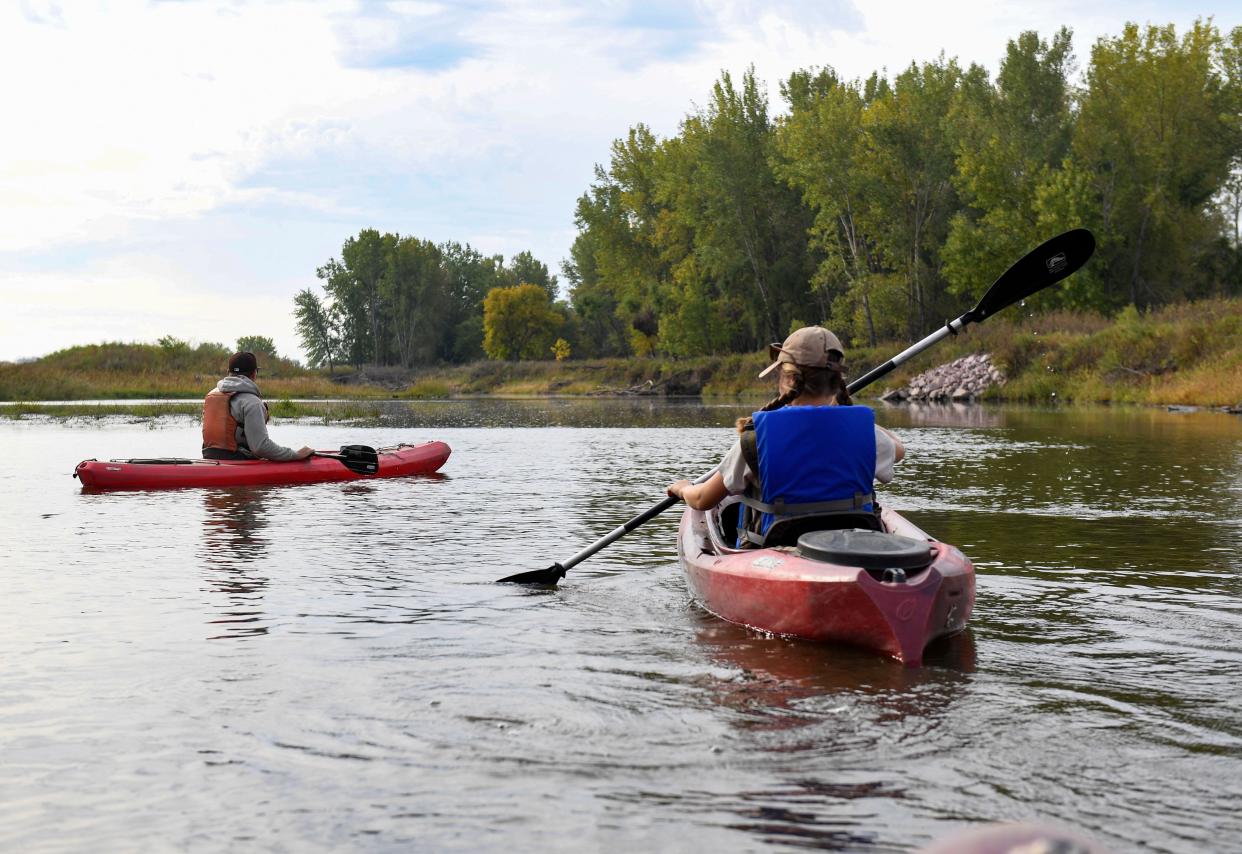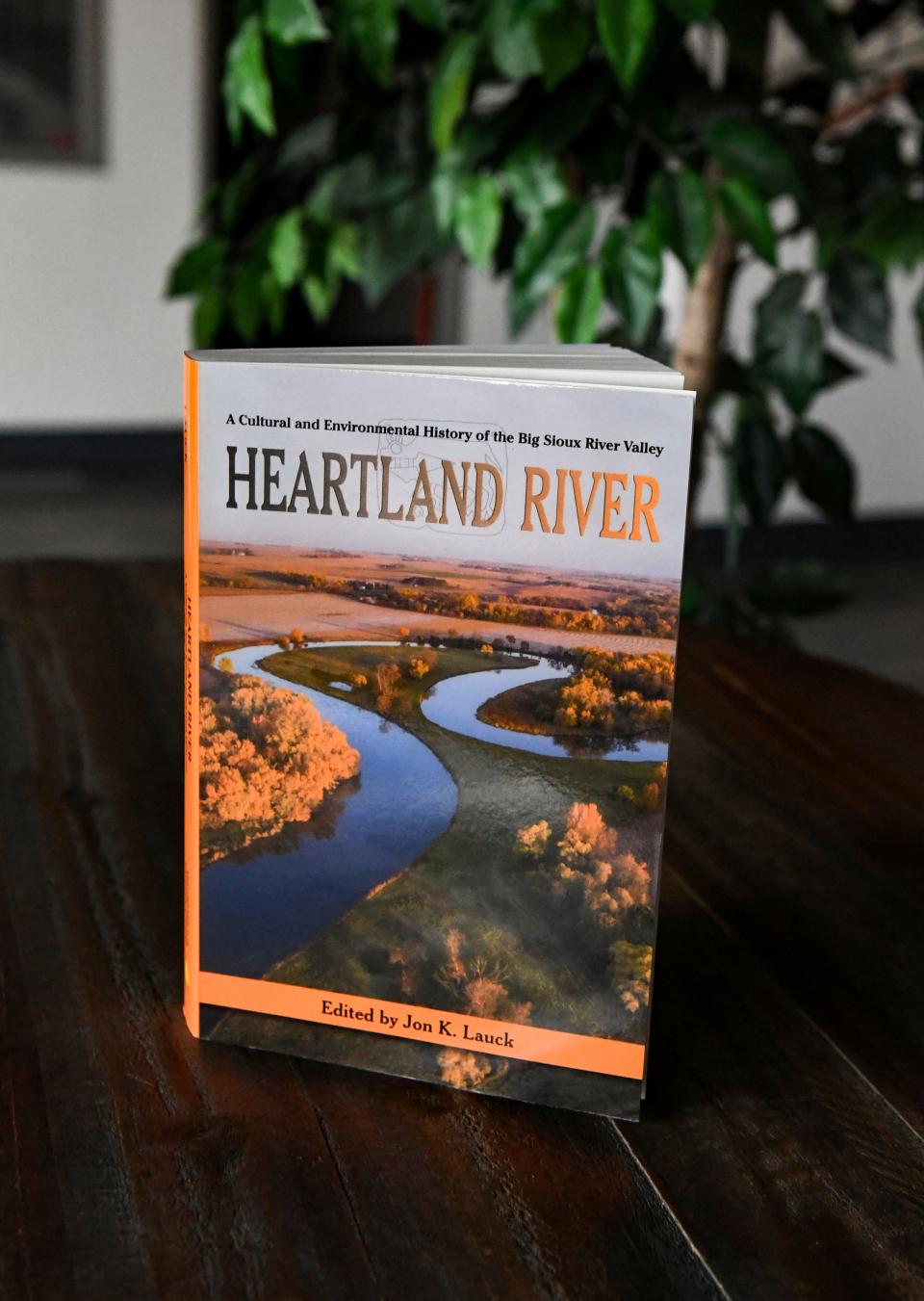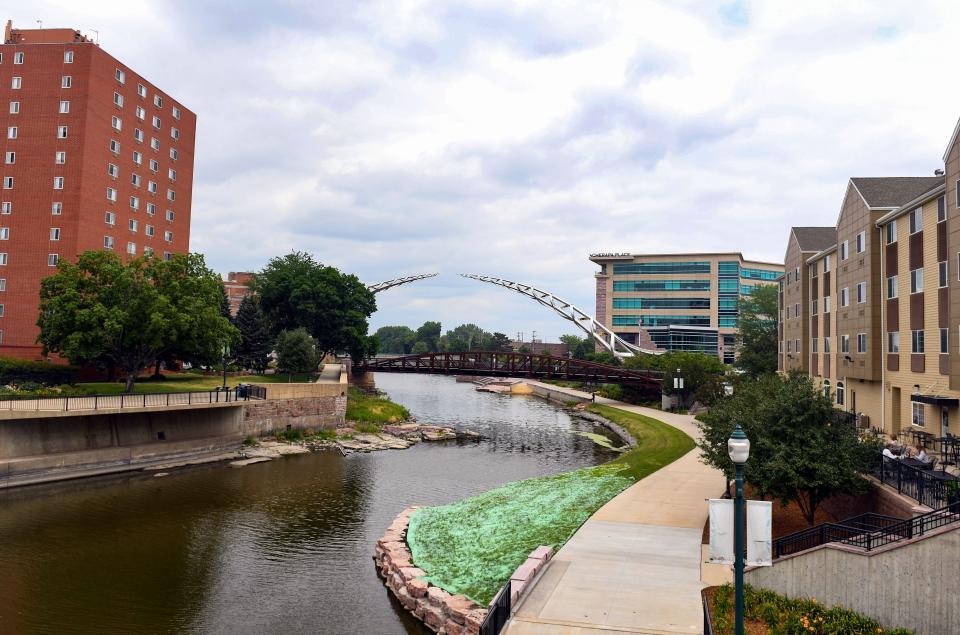The Big Sioux River gets its first book highlighting history, culture and ecology

- Oops!Something went wrong.Please try again later.
The Big Sioux River, the state's most populated river and the natural boundary that separates southeastern South Dakota from northwestern Iowa, has finally gotten what it so richly deserves: Its own book.
The Center for Western Studies at Augustana University has just released "Heartland River: A Cultural and Environmental History of the Big Sioux River Valley." The book had its coming out party during the 54th Annual Dakota Conference at Augustana April 28-29.
As historian and editor Jon K. Lauck writes in his introduction, the 420-mile river is longer than other rivers that have been aggrandized. It was snubbed by "The Rivers of America Series" that featured 122 other rivers.
"Robert Burns' famous 1783 poem 'The Banks O'Doon' is about the river Doon in Scotland, which stretches a mere 60 miles. Shakespeare's River Avon is 95 miles. Italy's mighty Tiber is just 252 miles. Even in our present age of active ecological imaginations and commonplace environmental writing, the Big Sioux remains elusive. Thus it is past time for this lost river's moment in the sun," writes Lauck, who is a senior adviser to Sen. John Thune.
The book contains essays in six sections: Natural History and Indigenous Peoples; Explorers, Settlers, Outlaws, and War; Writers, Scholars, and Artists; Politics; Water Quality; and Personal Reflections. And that says something about the river's importance to the region, whether its history, agriculture, archaeology, ecology and collective reverie.
More on the Big Sioux River: Want to go kayaking? Think again. Big Sioux river levels are too low, but there are other options.
From its headwaters west of Summit, South Dakota to its union with the Missouri River in Sioux City, the river's watershed contains about 9,000 miles in eastern South Dakota, southwestern Minnesota and northwestern Iowa.

Mark Dixon, a professor of biology at the University of South Dakota, participated in a study to inventory land uses along the river corridor. The study focused on riparian and upland forests in the corridor.
While forests only make up about 11 percent of the corridor, they play an important role.
"They tend to be disproportionately rich habitat for birds," Dixon said, while presenting his chapter at the Dakota Conference. That's particularly true for migrating birds. The forests offer a good resting area and plenty of nutritious food.
More than half of the corridor - 54% - is cropland. And that brings up another issue which the Big Sioux is known for: Pollution.
In his chapter, South Dakota State University professor Dale Potts addresses water quality. At one point, the Big Sioux was known as the "Silvery Sioux," Potts said during his Dakota Conference lecture.
More on the Big Sioux River: How do South Dakota researchers count river otters when they can't even find them?
That would come as a surprise to those acquainted with the river today. Potts, who specializes in American environmental history, said the first efforts that had an effect on the water quality of the Big Sioux focused on soil conservation efforts.
"Soil health became a national issue," he said. Efforts to address soil conservation sparked the development of infrastructure necessary to deal with water pollution.
But agriculture wasn't the only source of pollution. In the 1930s, farmers well south of Sioux Falls would have to close their windows because of the smell generated from sewage and packing house waste from Sioux Falls.
By the 1960s, federal surface water standards forced states to address point sources of pollution. But even with those reforms, the Big Sioux remains impaired largely because of chemical, top soil and livestock waste.
Still, the Big Sioux has its place in the region's history and culture. James Schaap, a former English professor at Dordt University, tells the story of Abbie Gardner, whose mother, father and brother were among those murdered in the 1857 Spirit Lake massacre by a band of Dakota Indians led by Inkpaduta. Gardner was spirited away as a captive when the Indians fled west.
More Augustana news: Augustana University plans to relocate 4 historic buildings to make space for hockey arena
Near present-day Flandreau, Gardner watched as the Indians murdered another captive, 19-year-old Elizabeth Thatcher, who was beaten to death while struggling to stay afloat in the Big Sioux.

Gardner was eventually freed and would go on to write a book about her captivity. Later, she would return to Flandreau, a believer in Jesus and forgiveness. Schapp said her account is jarring in that Gardner goes from describing the natural beauty of the region in one moment to amazing brutality the next.
Ultimately, he says, Gardner's memoir is a Christian testimony.
"Heartland River" is available locally at Barnes & Noble, the Center for Western Studies, the Old Courthouse Museum, Full Circle Book Co-op, Zandbroz Variety and also on Amazon.
This article originally appeared on Sioux Falls Argus Leader: New book on the Big Sioux River highlights the river's importance

